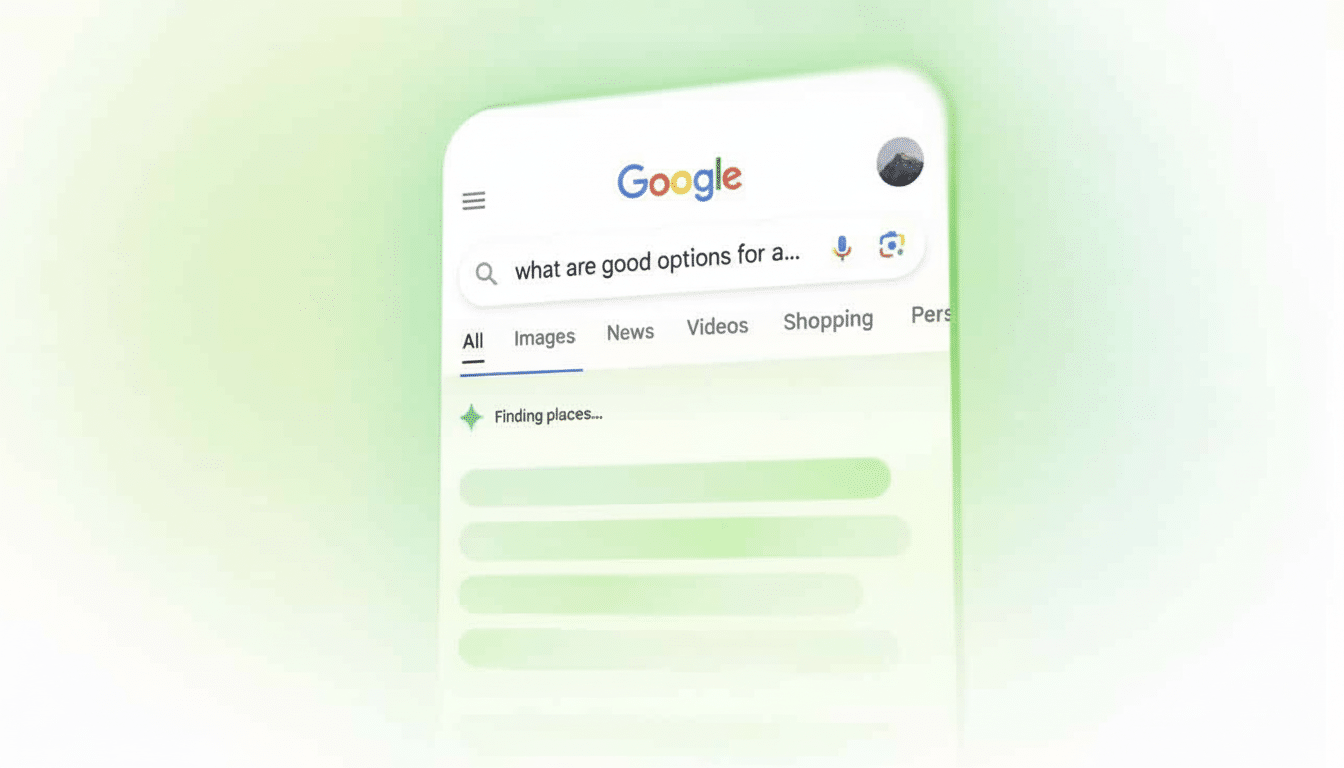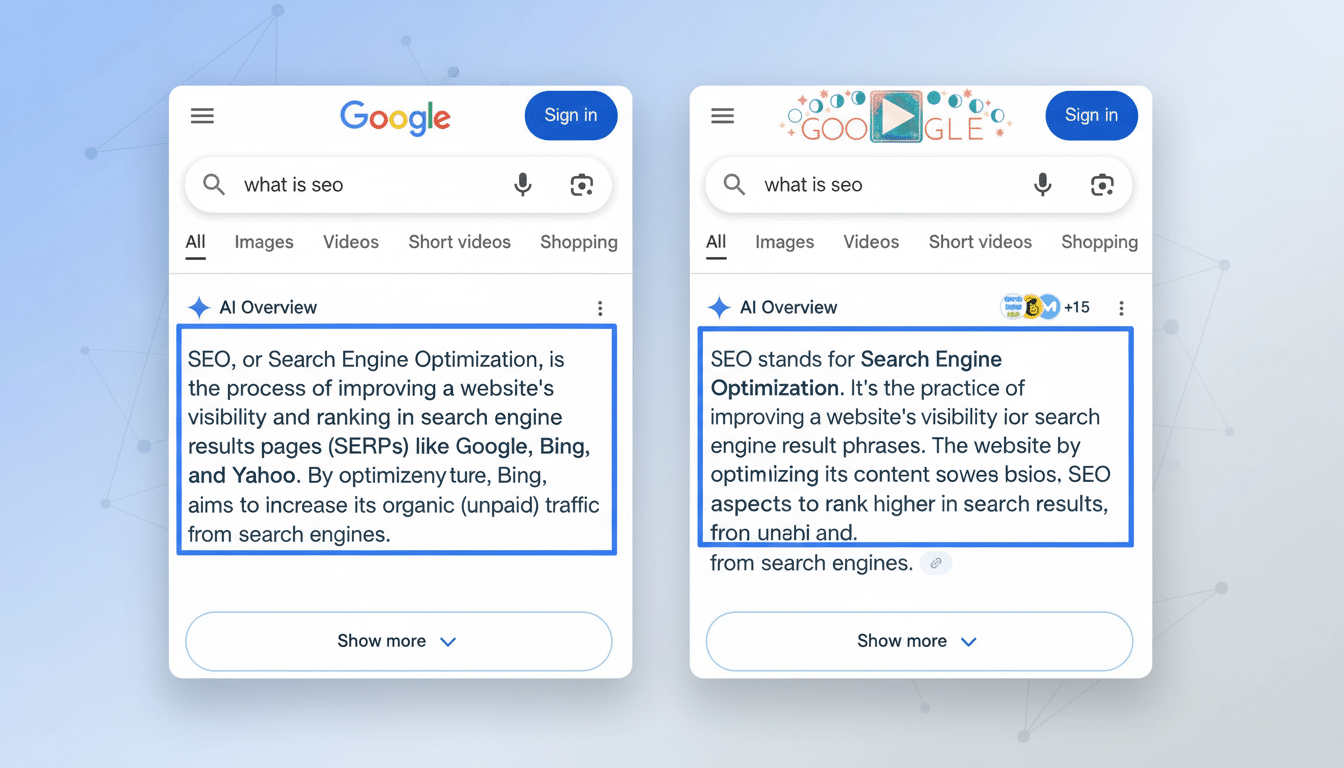A new redesign of Search and the Discover feed introduces a host of creative new AI-powered experiences, aligned with a more clear and open ad presentation that includes a control allowing users to fold sponsored placements out of sight.
The updates, which touch sporting events, topical feeds, and the way text and Shopping ads are categorized and captioned, extend across desktop and mobile.

A button labeled “Hide sponsored results” appears in Search, which, when pressed, collapses the text ad blocks that usually appear at or near the top. The ads will fold away and remain present as a consolidated header as users scroll, clearly labeled with “Sponsored Results.”
The same label can appear more normally over and between AI Overviews, as well as at the bottom of the page, where all text ads are grouped under the same label. Practically, this will reduce immediate clutter while enhancing ad disclosures’ staying power.
Google claims the ads appear unchanged in size, and users will not have over four text ads in any proto-grouping. In Shopping, the disclosure slides underneath “Sponsored Products” to maintain congruity in terminology across the feature set.
The change aligns with the broader expectations of clear and evident ad labeling feeding to increased lobbying by the Interactive Advertising Bureau and suggestions by regulators to upgrade transparency in online advertising. A collapsible remedy may increase the perceived control of the consumer while not entirely depriving marketers of visibility, a vital performance channel for many who rely on Search as their main harvesting instrument.
How AI Is Shaping Discover and Search Experiences
The Discover feed in the Google app will now have a layer that leverages AI to curate and show you short previews of trending topics that you closely monitor. Clicking on one will expand the sneak peek into a quick summary, along with extra links for you to read more, making it easier for individuals to keep abreast of news from multiple publishers without missing the full story. The U.S., South Korea, and India will be the first to receive this novel approach.
Search, on the other hand, will get a brand-new “What’s New” button on sports searches conducted for squads, divisions, and persons. When a fan begins typing a club, school, or player name hours before a game begins, the panel can show you everything you need to know about the game. Within the next several weeks, Google says that the feature will be available to sports search results in the U.S. These are in addition to the current AI Overviews, which are short summaries generated by the system that regularly come around many inquiries.
Google will also invoke a constant “Sponsored Results” tag around ad clusters that rest near AI synopses while connecting text ads in Search beneath a solitary, retractable headline. Advertisers would worry about the whereabouts and the behavior of these connections, which might change the congregation of attention and the dynamics of clicks between the high and low ad clusters using performance indicators such as impression allocation, normal circumstances, and click candidates and as customers adopt the “Skip publicity outcomes” power.

Because ads demand considerably fewer watch time and space using a limit of four text ads per cluster, the consequence is a sign that would restrict advertising loading and purchasing instability on affordable searches.
Publishers may be overly critical of the Discover changes and AI previews. While the goal is to help users find a wider range of sources, shorter summations may result in fewer outbound clicks. Industry organizations have expressed fears that AI-generated solutions could stifle traffic in some places, whereas platforms claim they produce area. According to market intelligence firms, referring trends have been choppy so far this year, and a significant amount of newsroom reinspecting is underway as feeds like Discover are more tailored and AI-driven.
From a sector standpoint, search remains the biggest single digit of U.S. digital ad income, and Google’s piece of it is accessible via IAB’s annual report. Independent eMarketer data reveal that the majority of search ad spending is still done by Google. As a result, even minor UI modifications, such as a prominent notice that follows users as they scroll, have the ability to ripple through advertiser execution and publisher referring trends.
What Users Can Expect Next from Google Search and Discover
The redesign stresses efficiency and readability – tidier groupings and a single hideout for ads, plus AI helpers that summarize what’s new – so no added search is required.
Google has not stated whether the “Hide sponsored results” preference sticks between sessions. Thus, treat it as a temporary control and anticipate turning it on and off as needed.
When it comes to sports, the “What’s New” button in Search will provide a brief rundown before the game starts. There will be more topic cards in Discover, which will expand into a small preview of key points and connections to learn more. “Sponsored Products” labels will be more visible in feed scrollers and modules.
Taken together, the changes amount to a balancing act that is almost impossible to get completely right: more control and transparency, but no less effectiveness of ads, with AI thrown in where it can help handle the friction but not help hide the sources. While Google begins to roll parts of the initiative out, keep an eye out for the ways small changes like how much you keep scrolling past some ads, how frequently you hit the arrow on the quick preview or whether those AI-guided summaries actually do make it easier to get to the information and, importantly, the publishers you are actually interested in.

